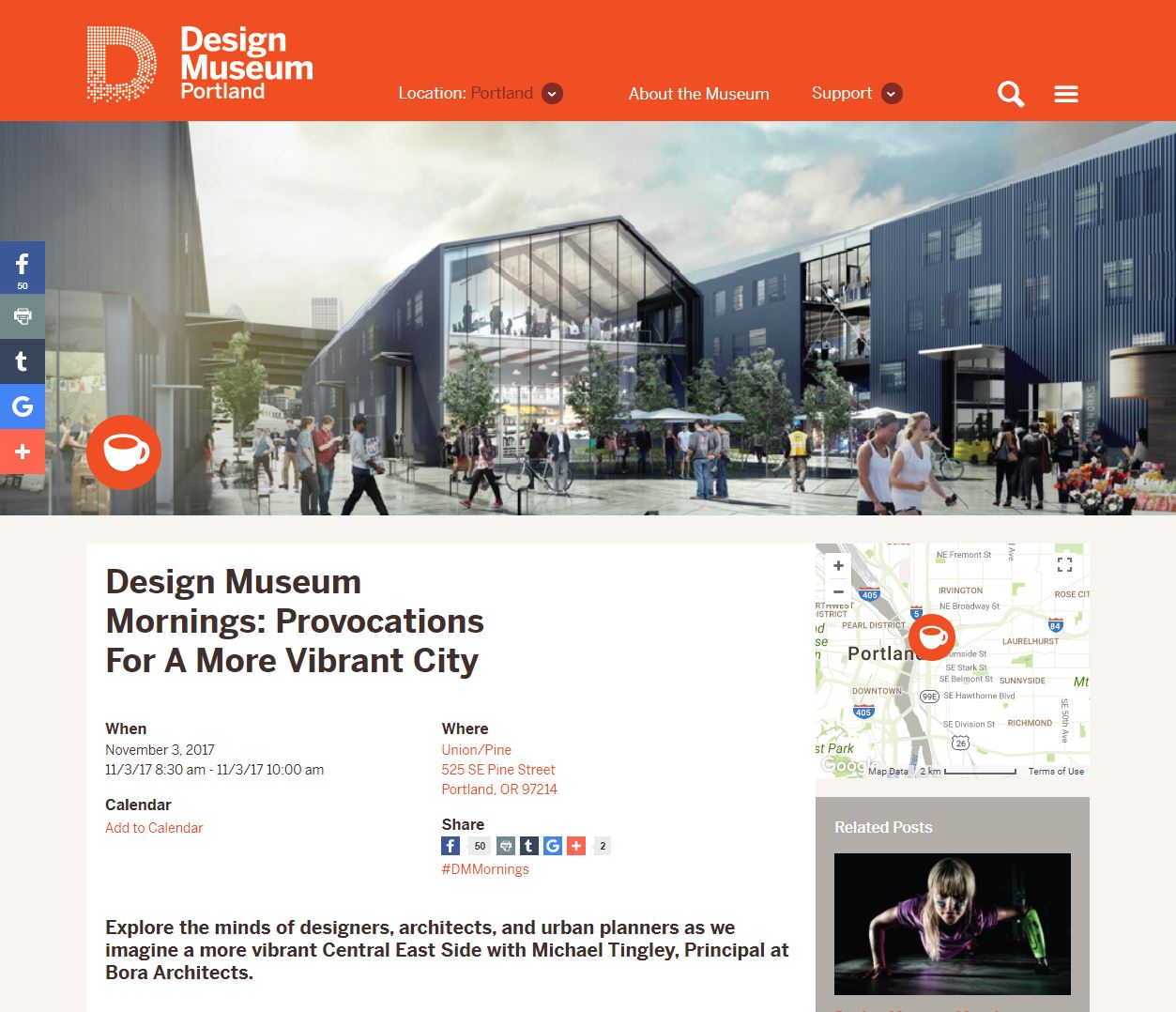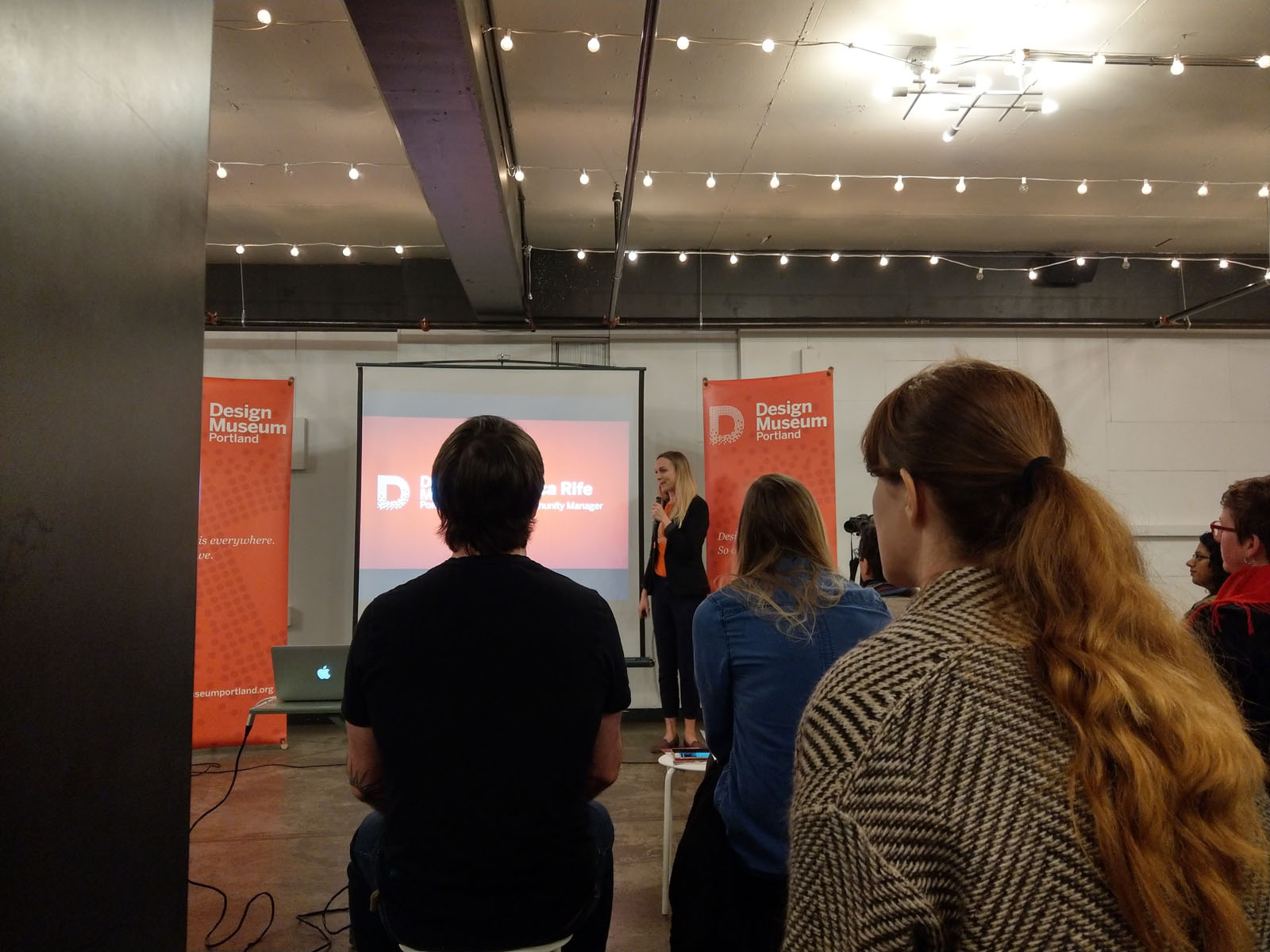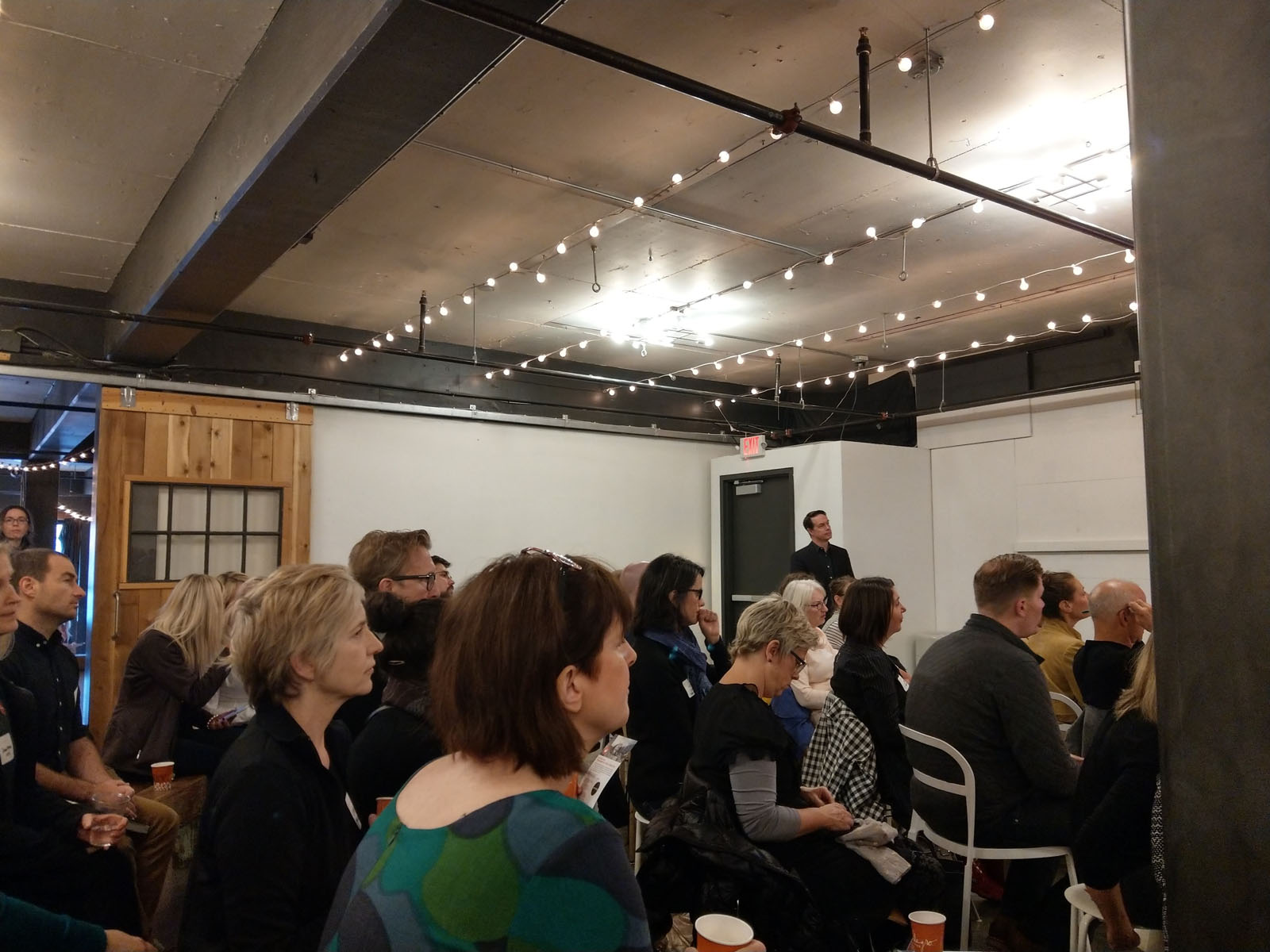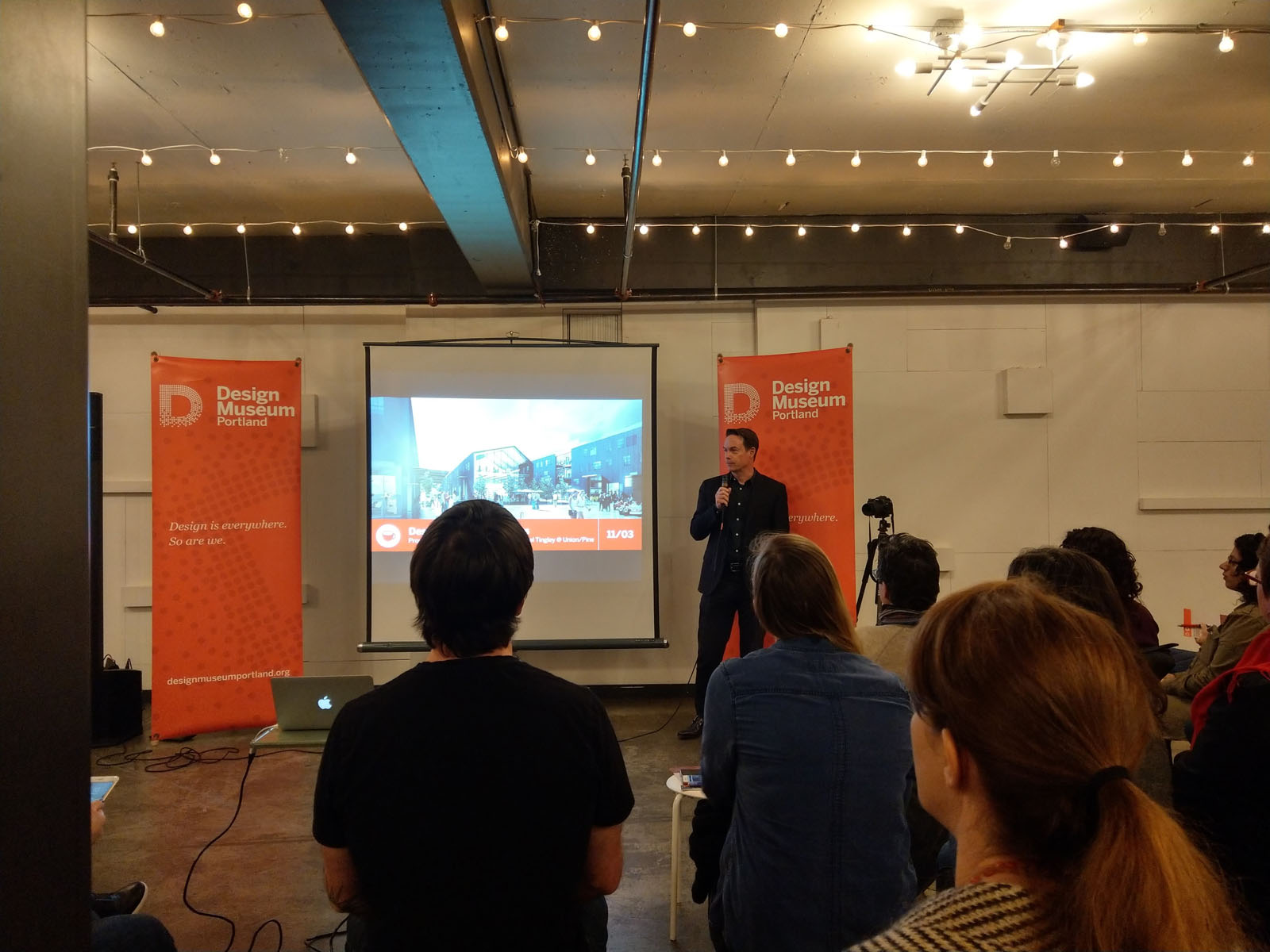





11.03.17
Early this morning, over 80 people gathered at an event space in Portland’s Central Eastside Industrial District to drink some coffee, eat some pastries, and listen to Michael Tingley talk about Water Avenue Yards.
The event was organized by Design Museum Portland, a nomadic museum that hosts community discussions on topics across diverse disciplines, with the goal of illuminating how design impacts all facets of our lives. In spite of the early hour and brisk conditions outside, the crowd was lively and engaged. Those in attendance included local makers and creatives, Central Eastside neighbors, and other citizens interested in the trajectory of Portland development.
After Michael spent some time presenting the concept and motivation for Water Avenue Yards, the room opened up to questions. Pretty quickly, a hand went up, and the conversation took off.
The first commenter was curious about how children and the elderly would be accommodated in the multi-modal “woonerf” circulation system. In response, Michael spoke about the range of activities that could take place here, and the manner in which they would stagger throughout each day, creating a rhythm of pedestrian and vehicular movement. Carving out more space for unhurried users would help mitigate conflict with cyclists and runners moving through the site at a faster pace.
A couple of people brought up climate change, rising sea levels, and seismic activity. While there wasn’t quite enough time do a deep dive, Michael acknowledged the challenge these issues present to any waterfront development in Portland. The ground would need to be reinforced to minimize impact during the inevitable “Big One”, and significant softscaping would offer resilience to flooding.
There were also several logistical questions, and a clear desire from the audience to understand who currently owns the site and what the development timeline looks like. An older woman brought up the convergence of related initiatives in this area, including a proposed eco district, a green loop, and the future of parcels owned by neighboring OMSI (Oregon Museum of Science and Industry). Someone else reminded the room that Portland’s Post Office Blocks are also slated for redevelopment.
Michael encouraged everyone to get informed about all the sites being discussed, since they represent opportunities for citizens to influence how our urban environment grows and changes. Responding to this, one of the attendees offered the critique that Water Avenue Yards seemed to view Portland as a city of consumption, rather than culture.
While economic considerations certainly factored into Bora’s design, Michael suggested that culture and consumption in Portland are convergent, and Water Avenue Yards tries not to draw a hard line between the two. Instead, our proposal tries to support local makers and emerging industries, while enshrining flexibility and public access to the riverfront. These objectives should reinforce each other, creating a hub for civic engagement and commerce that improves the city’s ecological, social, and economic wellbeing.
It was heartening to see so many passionate people coming together to express interest in Portland’s future. We’re grateful to Design Museum Portland for creating a forum for dialogue, and inviting us to share our design provocation with our fellow citizens. We’re looking forward to seeing the conversation transform into action, and hope others in the community feel the same!